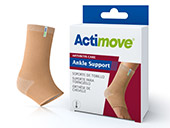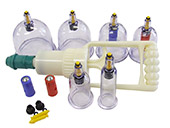Benefits of Ice Baths
For athletes and fitness enthusiasts searching for an effective recovery tool, ice baths have become a popular recovery aid. This age-old practice is gaining renewed attention for its ability to enhance recovery and soothe sore muscles. In this blog, we'll delve into the benefits of ice baths and why incorporating them into your recovery routine might just be the therapy your body needs.
What Is an Ice Bath?
Ice baths, also known as cold water immersion, cold water therapy or cryotherapy, involve submerging the body, or specific body parts, in ice water for a designated period of time. Typically, the water temperature ranges from 10 to 15 degrees Celsius (50 to 59 degrees Fahrenheit). The shock of the cold water triggers various physiological responses in the body, leading to a range of health benefits.
What Are The Benefits of Ice Baths?
Reduced Muscle Soreness and Inflammation
One of the primary benefits of ice baths is their ability to reduce muscle soreness and inflammation. The cold water constricts blood vessels, reducing the flow of inflammatory molecules and metabolic byproducts that accumulate after intense exercise. This constriction helps in minimising swelling and alleviating the discomfort associated with muscle soreness.
Improved Muscle Recovery
Ice baths work by accelerating the recovery process as they enhance blood circulation. After exposure to cold water, the body works to rewarm itself, leading to a rapid return of blood flow. This increased circulation helps flush out metabolic waste products from the muscles, promoting faster recovery and reducing the risk of overtraining.
Pain Relief and Numbing Sensation
The cold temperatures induce a numbing effect on nerve endings, providing temporary pain relief. This analgesic effect can be particularly beneficial for individuals dealing with chronic pain conditions or recovering from injuries, making ice baths a valuable addition to pain management strategies.
Enhanced Performance and Endurance
Regular incorporation of ice baths into your recovery routine has been associated with improved performance and endurance. By minimising muscle fatigue and soreness, athletes can maintain higher training volumes and intensity, contributing to long-term gains in fitness and overall performance.
Reduction of Delayed Onset Muscle Soreness (DOMS)
Delayed Onset Muscle Soreness (DOMS) often follows intense or unfamiliar exercise. Ice baths have been shown to mitigate the severity and duration of DOMS, allowing individuals to engage in subsequent workouts with reduced discomfort and stiffness.
Mental Health Benefits
Beyond the physical advantages, ice baths also offer mental health benefits. The shock of cold water triggers the release of endorphins, promoting a sense of well-being and relaxation. This can be particularly beneficial for individuals managing stress or seeking a natural mood boost.
Enhanced Immune Function
Cold water immersion has been linked to improvements in immune function. The temporary stress induced by the cold prompts the body to release immune-boosting factors, potentially enhancing the body's ability to fend off illnesses.
Incorporating ice baths into your recovery routine can be an effective method in optimising performance and improving overall well-being. As with any recovery strategy, it's crucial to listen to your body and consult with a healthcare professional, especially if you have pre-existing medical conditions. Whether you're a seasoned athlete or someone simply looking to enhance their post-workout recovery, exploring the benefits of ice baths may lead you to a refreshing and rejuvenating experience, helping you unlock the full potential of your recovery journey.
Commonly Asked Questions
1. Are ice baths only for elite athletes, or can anyone benefit from them?
Ice baths are not exclusive to elite athletes. Anyone engaging in regular physical activity, from daily walkers to fitness enthusiasts, can potentially benefit from ice baths. They are particularly useful after intense workouts, competitions, or as part of a recovery routine to manage muscle soreness.
2. How long should I stay in an ice bath, and how often can I take one?
The optimal duration to take an ice bath is typically around 10 to 15 minutes. However, individual tolerance varies, so it's essential to listen to your body. For frequency, most experts recommend incorporating ice baths two to three times per week, especially after intense training sessions.
3. Can ice baths help with injury recovery, and are they safe for injuries?
Ice baths can aid in injury recovery by reducing inflammation and promoting blood circulation. However, you should consult with a healthcare professional before using an ice bath for specific injuries. While they are generally safe, certain conditions, such as Raynaud's disease or cardiovascular issues, may warrant caution.
4. Are there alternatives to traditional ice baths for those who find them too intense?
Yes, alternatives like cold water immersion in a bathtub, contrast baths (alternating between hot and cold water known as 'hot and cold therapy') or using cold packs on targeted muscle groups can offer similar benefits with less intensity. Experimenting with different methods allows individuals to find what works best for them.
5. Are there any risks or side effects associated with ice baths?
While ice baths are generally safe, some individuals may experience adverse effects like numbness, tingling, or skin irritation. Prolonged exposure to extremely cold water can lead to hypothermia, so it's vital to follow recommended guidelines and pay attention to your body's signals.
6. Can ice baths be beneficial for mental well-being?
Yes, ice baths can be beneficial for mental health. The release of endorphins triggered by the shock of cold water can contribute to a sense of well-being and relaxation. Many individuals find the invigorating experience of an ice bath to be a refreshing and mood-boosting activity.
7. Should I take an ice bath before or after a workout?
While there is no strict rule, most experts recommend taking ice baths after a workout. Post-exercise ice baths help in reducing muscle soreness, inflammation, and accelerating the recovery process. However, pre-workout cold exposure may have benefits for certain individuals, enhancing alertness and potentially improving performance.
8. Can ice baths contribute to weight loss?
While ice baths may briefly increase calorie expenditure due to the entire body working to rewarm itself, they are not a significant weight loss strategy. The primary benefits lie in muscle recovery, reduced soreness, and improved overall well-being rather than substantial weight loss.
9. Are there specific conditions where you should avoid ice baths?
Individuals with certain medical conditions, such as Raynaud's disease, cardiovascular issues, or those prone to severe cold intolerance, should consult with a healthcare professional before attempting an ice bath. Pregnant women should also exercise caution and seek medical advice before incorporating cold water immersion into their routine.
Recommended Ice Baths
Lumi Recovery Pod Portable Ice Bath
The Lumi Recovery Pod™ Ice bath is a 'fully-portable' insulated pod, incorporating 3 layers of thermal insulated TPE protection that helps to keep the water at a steady temperature.
Also included are both the Lumi Thermo insulated Lid and All-weather cover as standard.
The Thermo lid is designed to add a thermal bridge between the ice bath water and the external elements, and the all-weather cover to keep rainwater and other debris out of your ice bath.







Did you find this article useful?
Why not share this with a colleague, patient or friend?